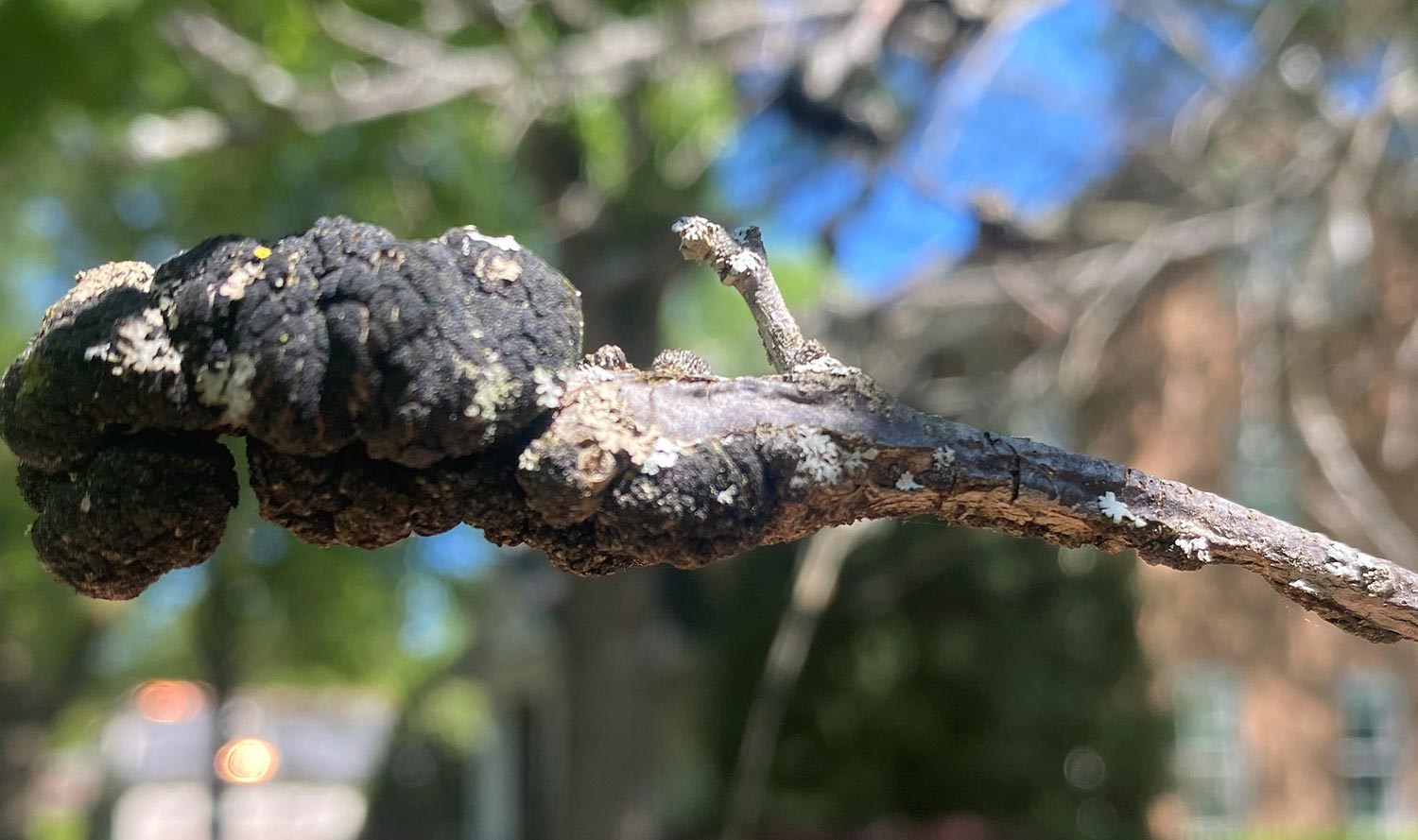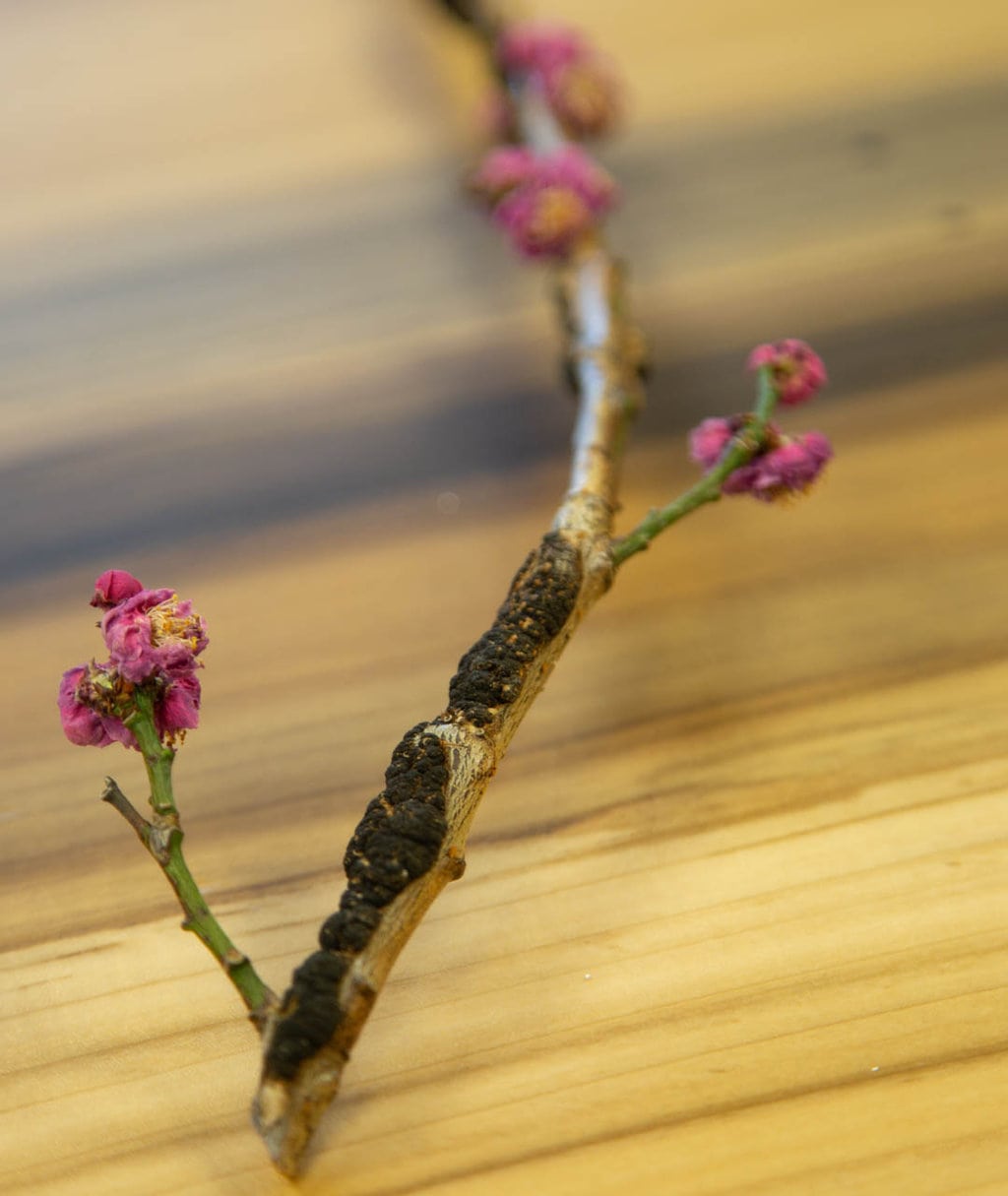
See all posts by this author
As arborists, we have seen many tree diseases and pests, but one of the most persistent and destructive is the black knot fungus. This fungus attacks a wide range of tree species, but is particularly harmful to wild and cultivated cherries, plums, and apricots. The black knot fungus infects the branches, twigs and sometimes the trunk of trees, and can severely damage or kill the tree if left untreated. In this article, we will explain what black knot is, how it infects trees, and what can be done to prevent and control its spread.
Black knot, scientifically known as Apiosporina morbosa, is a fungal disease that is widespread in the Northern Hemisphere. The fungus infects trees through their bark and begins to grow inside, forming large, black, and knotty growths on the branches. The knots can grow up to a foot in length and several inches in diameter, and they can become so large that they cause the branches to crack and break. The infected bark and wood can also become stunted and distorted, which can reduce the tree’s overall health and vigor.
The fungus is most commonly spread through the dispersal of its spores, which can be carried by wind, rain, animals, or even people. It can also spread through pruning tools that are not properly sanitized between cuts, as well as by infected wood used for firewood or landscaping purposes.
To prevent the spread of black knot, it is important to practice proper sanitation techniques. This includes regularly inspecting trees for symptoms of infection and removing infected branches before the fungus has a chance to spread. Pruning tools should be sterilized between cuts, and infected wood should be disposed of properly.
In addition to proper sanitation, there are fungicides available that can be used to control black knot. These fungicides can be applied to the tree trunk or directly to the knots, and they can help to slow or stop the spread of the fungus. However, fungicides are not a cure-all, and they should be used in conjunction with other preventative measures.
If a tree has been infected with black knot, it is important to take immediate action. Infected branches should be cut back to healthy wood and disposed of properly. This will help to reduce the amount of spores that can be spread to other trees, and it will help to prevent the fungus from spreading further within the tree. In severe cases, the entire tree may need to be removed to prevent the spread of the fungus to other trees in the area.
Fall and winter are the times when Black Knot is easiest to recognize. The effect of the fungus on the tree’s growth can be compared to cancer, where the cells grow abnormally and often larger than is otherwise healthy. This can affect the overall canopy and growth of the tree, although unaffected areas of the tree will maintain green leaves which can be confusing to the untrained eye. 
Of course, prevention and treatment for black knot is included in a Plant Health Care subscription from Arborscapes. (As are myriad other pests and diseases) If you would like to become a part of our Plant Health Care program, reach out to Arborscapes today! Your living landscape will be the envy of the entire neighborhood!
See all posts by this author
